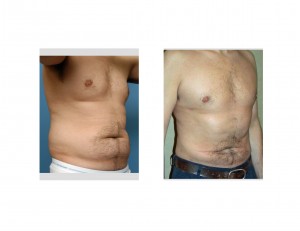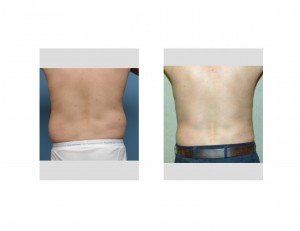Background: Liposuction is the most commonly performed body contouring procedure when judged by surface areas treated and the number of patients who undergo it. For men it is absolutely the most common aesthetic body contouring procedure and is largely done for the abdomen, waistline and chest. These are the primary areas in men that are affected by unaesthetic fat collections with the stomach and waistline ultimately being of some concern for most men as they age.
The age of men that usually seek abdominal and waistline contouring is usually younger, often being under the age of 45 years old. They may have always been bothered by a ‘bigger belly’ or may have developed fat collections on a much more svelte physique when they were younger. They are even younger men (and some women) that appear now for liposuction that are undergoing it to pass the military fitness test.
One of the very important considerations in ‘younger’ male abdominal and waistline liposuction patients is to set realistic expectations. While many men envision that they will come out with a ‘six-pack’ and a beautifully tailored waistline, this is not realistic for many men. While there are techniques for abdominal etching and ‘six-pack’ liposuction, their effectiveness requires the right patient who is often more lean and has less overall fat thickness in the abdominal subcutaneous tissues.
Case Study: This 42 year-old male wanted to get rid of his ‘jelly belly’ and love handles. He exercised and biked regularly but was unable to contour these historically problematic areas of his body. He was at a good weight for his height (5’ 9”, 158 lbs) and had no concerns about any other body areas.



Case Highlights:
1) Body contouring in men almost always involves liposuction of the abdomen and love handles.
2) For most men the expectations of abdominal and waistline liposuction should be less bulging and a contour that is closer to being flat.
3) The ability to achieve with liposuction a six-pack or V-shaped waistline is not realistic for many men and realistic expectations should be understood before the procedure is done.
Dr. Barry Eppley
Indianapolis, Indiana


